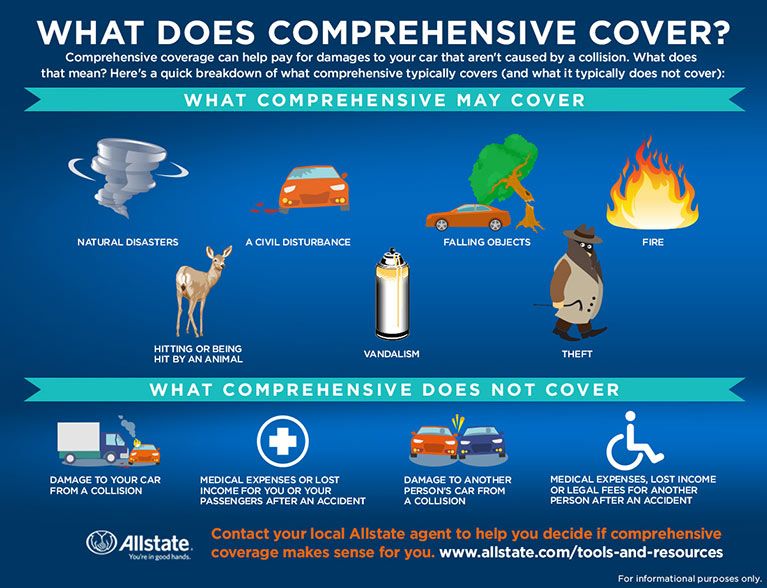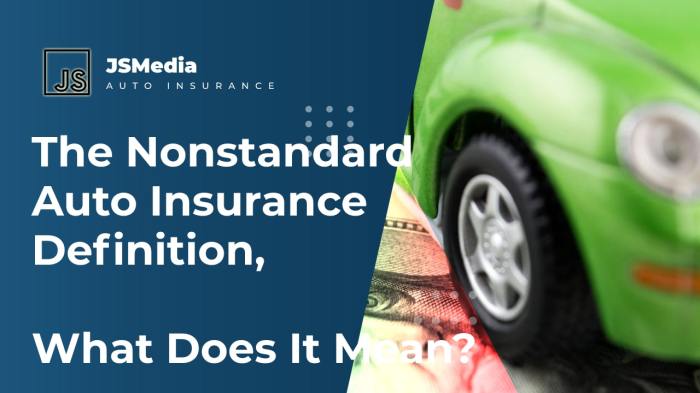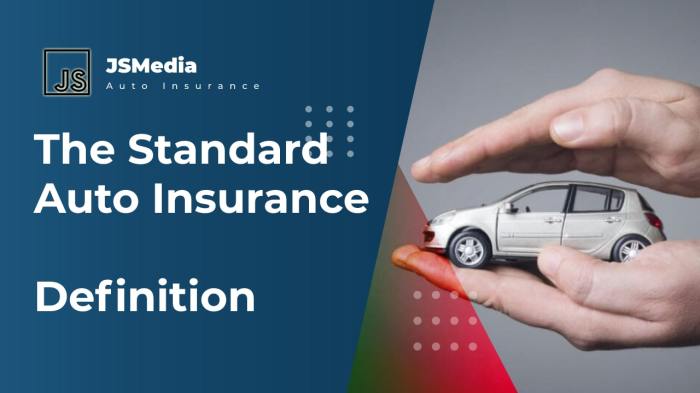Navigating the world of auto insurance can feel like driving through a dense fog. The jargon, the varying coverage options, and the seemingly endless variables influencing premiums can be overwhelming. This guide provides a clear and concise definition of auto insurance, breaking down its complexities into manageable components. We’ll explore the different types of coverage, factors impacting your rates, and the claims process, equipping you with the knowledge to make informed decisions about your auto insurance policy.
From the basic definition of auto insurance and its fundamental purpose to the intricacies of claims processes and policy selection, this guide aims to demystify the subject. We’ll cover key components of a policy, compare different coverage types, and explore how various factors affect premiums. By the end, you’ll have a comprehensive understanding of auto insurance and be better prepared to choose the right policy for your needs.
Types of Auto Insurance Coverage

Choosing the right auto insurance policy can feel overwhelming, given the variety of coverage options available. Understanding the different types of coverage and how they protect you is crucial to making an informed decision. This section will Artikel several common types of auto insurance, highlighting their key differences and benefits.
Liability Coverage
Liability coverage protects you financially if you cause an accident that injures someone or damages their property. It covers the costs of medical bills, lost wages, and property repairs for the other party involved. Liability coverage typically comes in two parts: bodily injury liability and property damage liability. Bodily injury liability covers medical expenses and other damages related to injuries sustained by others in an accident you caused. Property damage liability covers the cost of repairing or replacing the other person’s vehicle or property. The limits of your liability coverage are expressed as numerical values, such as 25/50/25, meaning $25,000 per person for bodily injury, $50,000 total for bodily injury per accident, and $25,000 for property damage.
Collision Coverage
Collision coverage pays for repairs to your vehicle if it’s damaged in an accident, regardless of who is at fault. This means that even if you cause the accident, your insurance will help cover the cost of repairing or replacing your car. It’s important to note that collision coverage typically has a deductible, which is the amount you pay out-of-pocket before your insurance kicks in. For example, if you have a $500 deductible and your repairs cost $2,000, you would pay $500, and your insurance would cover the remaining $1,500.
Comprehensive Coverage
Comprehensive coverage protects your vehicle against damage caused by events other than collisions, such as theft, vandalism, fire, hail, or natural disasters. Unlike collision coverage, comprehensive coverage does not require the involvement of another vehicle. Similar to collision coverage, comprehensive coverage usually includes a deductible. For example, if a tree falls on your car, comprehensive coverage would help pay for the repairs, minus your deductible.
Uninsured/Underinsured Motorist Coverage
Uninsured/underinsured motorist (UM/UIM) coverage protects you if you’re involved in an accident caused by a driver who is uninsured or whose insurance coverage is insufficient to cover your damages. This coverage can pay for your medical bills, lost wages, and vehicle repairs, even if the at-fault driver doesn’t have adequate insurance. It’s a crucial protection in areas with a high number of uninsured drivers.
Comparison of Auto Insurance Coverages
The following table compares four common types of auto insurance coverage:
| Coverage Type | What it Covers | Cost | Benefits |
|---|---|---|---|
| Liability | Damages to others (property and injuries) you cause | Moderate to High (depending on limits) | Protects you from significant financial losses if you cause an accident. |
| Collision | Damage to your vehicle in an accident, regardless of fault | Moderate to High (depending on deductible) | Covers repairs or replacement of your vehicle after an accident. |
| Comprehensive | Damage to your vehicle from non-collision events (theft, fire, etc.) | Moderate | Protects your vehicle from a wide range of non-accident related damages. |
| Uninsured/Underinsured Motorist | Damages caused by an uninsured or underinsured driver | Low to Moderate | Provides crucial protection against drivers without adequate insurance. |
The Claims Process
Filing an auto insurance claim can seem daunting, but understanding the process can significantly ease the experience. A smooth claim process relies on prompt action, accurate information, and clear communication with your insurance provider. This section details the steps involved, necessary information, typical timelines, and provides a practical example.
Information Needed to File a Claim Effectively
To ensure your claim is processed efficiently, you’ll need to gather several key pieces of information. This includes your policy number, the date and time of the accident, the location of the accident, details about the other driver(s) involved (including their insurance information, if possible), and a description of the accident itself. Crucially, you should also document any injuries sustained and obtain contact information from any witnesses. Photographic evidence of the damage to your vehicle and the accident scene is highly beneficial. Finally, providing a copy of your driver’s license and vehicle registration will expedite the process.
Steps Involved in Filing an Auto Insurance Claim
The process of filing an auto insurance claim typically involves several steps. Prompt notification to your insurer is crucial. This is often followed by an investigation into the circumstances of the accident, potentially involving a claims adjuster visiting the scene or reviewing provided evidence. Once the investigation is complete, the insurer will assess the damages and determine the payout, which may involve negotiations depending on the complexity of the claim. Finally, the settlement will be issued, usually as a check or direct deposit, to cover repairs or medical expenses.
Typical Timeframe for Claim Processing
The time it takes to process an auto insurance claim varies depending on the complexity of the accident and the volume of claims the insurer is handling. Simple claims with minimal damage and clear liability might be processed within a few weeks. More complex claims, involving significant damage, multiple parties, or disputed liability, can take several months. Factors such as the availability of repair shops and medical professionals can also impact the overall timeline. For example, a minor fender bender might be resolved in a matter of weeks, while a serious accident with injuries could take months to settle.
Example Car Accident and Claim Process
Imagine Sarah is involved in a rear-end collision. She immediately calls 911 and the police are dispatched. She exchanges information with the other driver and takes photos of the damage to both vehicles and the accident scene. Within 24 hours, Sarah contacts her insurance company and reports the accident, providing all the collected information. The insurer assigns a claims adjuster who reviews the police report, photos, and statements from Sarah and the other driver. After assessing the damage, the insurer approves the repair estimate and Sarah takes her car to a repair shop. Once the repairs are complete, Sarah receives reimbursement from her insurer.
Step-by-Step Guide to Filing a Claim
- Report the accident to the police if necessary (especially in cases of injury or significant damage).
- Document the accident scene: Take photos and videos of the damage, the location, and any visible injuries.
- Gather information from all parties involved: Names, addresses, phone numbers, insurance details, driver’s license numbers.
- Contact your insurance company as soon as possible to report the accident and begin the claims process.
- Provide your insurer with all relevant information and documentation.
- Cooperate fully with the insurance adjuster’s investigation.
- Follow your insurer’s instructions regarding repairs or medical treatment.
- Review the settlement offer and negotiate if necessary.
Understanding Policy Exclusions and Limitations

Auto insurance policies, while designed to provide comprehensive protection, are not all-encompassing. Understanding the exclusions and limitations within your policy is crucial to avoid unexpected financial burdens in the event of an accident or claim. Knowing what is *not* covered is just as important as knowing what *is* covered. This section clarifies common exclusions and limitations, helping you navigate the complexities of your insurance contract.
It’s vital to remember that insurance policies are legally binding contracts. Carefully reviewing your policy documents before signing and understanding the terms and conditions will prevent misunderstandings and potential disputes during the claims process. Failing to do so could lead to a denied claim, even if the circumstances seem straightforward.
Common Exclusions and Limitations
Several factors can limit or completely exclude coverage under your auto insurance policy. These limitations are often explicitly stated in the policy’s fine print, highlighting situations where the insurer is not obligated to pay for damages or losses. A thorough understanding of these exclusions is essential for informed decision-making regarding your insurance coverage.
- Driving Under the Influence (DUI): Most policies will not cover accidents caused by driving under the influence of alcohol or drugs. This is a significant exclusion because it eliminates coverage for damages caused while violating the law.
- Unlicensed or Unpermitted Drivers: Coverage may be limited or excluded if the driver involved in the accident lacks a valid driver’s license or is operating a vehicle without proper permission from the owner.
- Using a Vehicle for Unpermitted Purposes: Policies often specify the permitted use of the vehicle (e.g., personal use, commuting). Using the vehicle for unauthorized purposes, such as participating in a race or using it for commercial purposes without appropriate endorsements, may void coverage.
- Damage Caused by Wear and Tear: Normal wear and tear on a vehicle, such as tire punctures from road debris or gradual paint fading, are typically not covered by comprehensive insurance. These are considered maintenance issues rather than insurable events.
- Acts of God: While some policies offer coverage for damage caused by certain natural disasters, others might exclude damage from specific events, such as earthquakes or floods, unless specific endorsements are added to the policy.
- Intentional Acts: Damage caused intentionally by the policyholder or someone acting on their behalf is generally not covered. This includes self-inflicted damage to the vehicle.
Examples of Claims That Might Be Denied
Understanding how these exclusions manifest in real-world scenarios is critical. Here are a few examples of situations where a claim might be denied due to policy limitations:
- A driver involved in an accident while intoxicated will likely have their claim denied due to the DUI exclusion.
- A teenager driving a parent’s car without permission and causing an accident may find their claim denied because the driver was unlicensed or unauthorized.
- Someone using a personal vehicle for a ride-sharing service without the proper commercial endorsement might have their claim denied if an accident occurs while providing that service.
- Damage to a vehicle resulting from a slow, gradual rusting process will likely be denied because it is considered normal wear and tear.
Last Point

Securing the right auto insurance policy is a crucial step in responsible vehicle ownership. Understanding the definition of auto insurance, the various coverage options, and the factors influencing premiums empowers you to make informed decisions that protect both your financial well-being and your peace of mind. By carefully considering your individual needs and comparing quotes from multiple insurers, you can find a policy that offers the appropriate level of protection at a competitive price. Remember, proactive understanding of your policy is key to navigating any unexpected events.
FAQ
What is the difference between liability and collision coverage?
Liability coverage pays for damages you cause to others; collision coverage pays for damages to your vehicle regardless of fault.
How often should I review my auto insurance policy?
At least annually, or whenever significant life changes occur (new car, address change, etc.).
What happens if I’m in an accident and don’t have insurance?
You could face significant financial penalties, including hefty fines and legal repercussions. Your driving privileges may also be suspended.
Can I lower my auto insurance premiums?
Yes, by maintaining a good driving record, opting for higher deductibles, bundling policies, and considering safety features on your vehicle.
What is uninsured/underinsured motorist coverage?
This coverage protects you if you’re involved in an accident caused by an uninsured or underinsured driver.